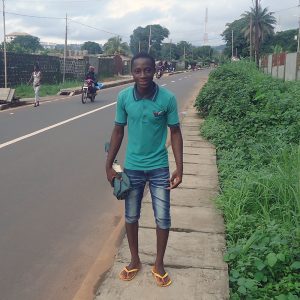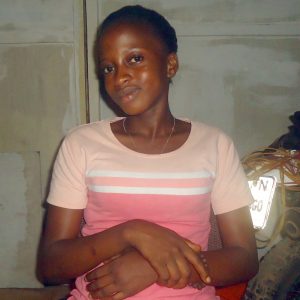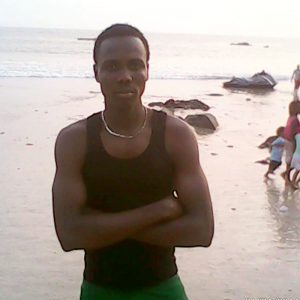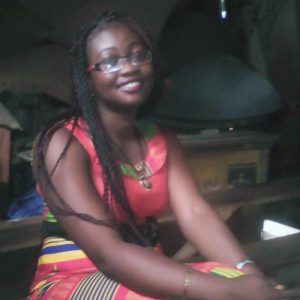The voices of young people living with speech and hearing impairment in Sierra Leone: a participatory photo project
Article
Abstract
This article offers a reflection on a participatory photography research project that was conducted as part of a wider research study in Sierra Leone. Young people with speech and hearing impairments were given a camera to elicit photos of their daily lives, their enjoyments and challenges and were then asked to discuss them. The photographs offered a striking, personal insight into the living realities of these young people, drawing attention to what it means to have a disability in Sierra Leone. The project itself had a wider impact on the young people, who felt valued in being asked to take part, and on the organisation that supports them, who have since come to greater appreciate their potential for contributing. The method is a valuable emancipatory tool for undertaking research, especially in cases that involve marginalised groups whose voices tend to be ignored or people who do not use speech as their primary mode of communication.
Introduction
In June to August 2016, I spent two months in Sierra Leone collecting data to form the basis of my Masters thesis. The purpose of my study was to investigate what has been achieved from disability advocacy efforts by a grassroots disability-rights NGO, One Family People. Before I could appreciate the broader goals of disability lobbying efforts in Sierra Leone, I wanted to gain a better understanding of what it means to live with a disability in Sierra Leone. As a white, middle class, British female who does not have a disability, the contrasts with my own life experiences were vast and I found it challenging at times to comprehend the scale of difficulties that face these young people on a daily basis.
The stigma surrounding disability is deeply entrenched in Sierra Leone, with a widely held belief that it is caused by a parent’s sin or the work of the devil (Powell 2010). When a child is born with a disability, families sometimes leave the baby in the forest, believing that the child must be returned to the demon spirits from where they came. Others abandon them altogether. Many people with disabilities end up living on the streets, having to engage in activities to satisfy their basic needs for short-term survival, including begging and theft. This causes a common perception that people with disabilities are trouble-makers, and that their behaviour is the cause of their disability: “Na dat mehk God mehk u so” [that is why God made you this way], is a charge frequently levelled towards them in instances of dispute. They are figures for mockery, often subjected to deliberate provocation and denied service by shopkeepers who believe they are there to beg or that serving them will bring bad luck. “The society makes you feel like you are a disabled. There is something like this barrier between us and them. They don’t recognise us, they think we are useless”, one girl with a disability told me.
The majority of my data collection came from interviews and focus groups with staff members of the organisation, power-holders in the Sierra Leonean government and other disability activists in civil society, as well as young people with disabilities who are supported by this organisation. The various different disabilities include physical disabilities, mostly as a result of childhood polio, visual impairments and speech and hearing impairments.
In my focus group with young people with speech and hearing impairments, I needed the assistance of a sign language interpreter. However, I found that this somewhat delayed the flow of conversation: I spoke to the interpreter, the interpreter translated it to the group, then the group conversed with the interpreter, who in turn translated it back to me. It was therefore difficult to facilitate an open dialogue in which I was involved, and the amount of information I gained from a one-hour interview was far less than in my other interviews, due to the time delay with the translation. Furthermore, the interception of a translator brought a risk that meaning was lost or altered in the translation process. This was problematic because meaning is ultimately the basis of qualitative research. Yet despite the challenges during our discussion, it was clear that these young people have many important things to say, but are rarely listened to.
Academics in the field of children and youth studies (Grover 2004, James 2007) emphasise the importance of giving children and young people a voice in the research process, but these young people are literally without a voice because they do not use speech as their primary mode of communication. Ashby (2011) discusses the methodological meanings of giving research participants a “voice”, and argues that the definition of voice is not limited to that which is articulated, but can also be observed and experienced. This was important for me to take into consideration for the research, because people with speech and hearing impairments employ different ways of communicating other than speech.
Participatory photography
I decided to do a participatory photography project with the young people. Participatory photography is defined by Kong et al (2015) as a form of photo elicitation whereby the participants generate their own photographs and are themselves “involved in analyzing their narratives and in determining what conclusions to report” (p.214). In participatory photography, “people use cameras to represent their experiences and perspectives on a given topic such as community strengths and problems” (Prins 2010). Participatory photography has become a popular method for professionals and researchers, especially when working with marginalised groups, among youth school attendees in the USA and Haiti (Zenkov et al 2014), for example, and livestock farmers in South Africa (Kong et al 2015). Participatory research techniques are “contingent on authentic participation” with a full discussion of one’s intentions and explanations behind that which they have produced (McTaggart 1989). I felt that photography was appropriate in this case, because I thought the use of a camera would provide the young people with speech and hearing impairments with a more direct method of communication in a medium other than language.
The photographers
The four participants are: Sawaneh Kamara (age 18), Ramatu Kamara (age 18), Foday Mattia (age 26) and Mariama Jalloh (age 27). One Family People supports them financially when they are in urgent need. The office serves as a location for them to gather socially, which they do on a regular basis after school. They all came to know each other through the organisation and have become very close friends.
Young people with speech and hearing impairments sit at an intersection of exclusion on the basis of their age and their disability. In Sierra Leone, positions of leadership are typically reserved for elders, meaning that young people are often left out of decision-making processes. This is also notable in the disability movement, which Callus and Farrugia (2016) claim is characteristically an adult’s movement that focuses on adult voices at the exclusion of those of children and young people.
“Disability” is a heterogeneous phenomenon encompassing many different conditions and experiences. For young people with speech and hearing impairments, the unique nature of their disability is another marginalising feature, because their needs and their experiences are quite distinct from those of people with other forms of impairment.
One Family People is one of very few organisations in Freetown that make a consistent effort to include and support young people with speech and hearing impairments. The two managerial staff learned sign language so they can communicate with them, they ensure there is a sign language interpreter in attendance at every event to translate for them, they employ a trainer who teaches dance lessons once a week, and the young people are backing dancers in the organisation’s musical group.
However, whilst the young people enjoy the dance classes and performing in the musical group, there was a sense from our discussions that they feel like their participation can be somewhat tokenistic. In our focus group, they told me that I was the first white person to ever engage them in a discussion. They explained that whenever foreigners visit the organisation, they normally have a meeting with the director in his office, then the director asks the group to perform a dance for them, and afterwards the visitor leaves. This limits the opportunity to engage in discussion and runs the risk that the young people’s role in the organisation is reduced to one of spectacle.
During my time with the NGO, I observed that, often, the full participation of the young people with speech and hearing impairments was inhibited mostly due to practical reasons more than anything else. Even when the NGO makes concerted efforts to include them, this is not always easy because their mode of communication is different to others around them. At one particular event with an audience of around 50, for example, all the attendees were invited to sit in small groups and intermittently move to join different groups to encourage everyone to share ideas. For the four young people with speech and hearing impairments however, they could not all move around because there was only one translator present, so they all needed to sit together. This meant they could not fully mix with the rest of the participants.
The sense of separation between them and mainstream society is often through choice, as well as feasibility. As is quite common within the speech and hearing impaired community across the world, these young people prefer to socialise in circles with other people with whom they can reciprocally communicate in the same way. When I asked the group if inclusion is their main goal, they all replied strongly with a “No”. This indicates that the goal of inclusion, which categorises much of the lobbying efforts by groups of people with physical disabilities, is not always shared by people with speech and hearing impairments.
Methodology
I wrote down the following three questions on a piece of paper in thick black pen: “What is it like to be a young person in Sierra Leone? What do you enjoy? What are the challenges?”. I explained to the group that I wanted them to take photographs in response to these questions, and that I would lend them the camera to use for two days each, and after ten days we would meet again to discuss the photographs they had taken as a group. I wrote down the names of each participant in order from one to four, and explained that each person would use the camera for two days, and then they would then meet with the next person to hand over the camera for their turn. Saweneh was first on the list, so I handed the camera to him to use first. I took a photo of the questions so they could refer back to these questions on the camera roll in case they needed a reminder, and I also took a photo of the list of names so they could remember the order of names. I asked them to elicit a maximum of 20 photos each; they could take as many as they wished, but they needed to delete ones they did not like so they were left with a maximum of 20. I also showed them the main features of the camera so they knew how to use it. We arranged a time to meet ten days later, when they had all taken their photographs. On that day, we re-grouped with the interpreter present, and the photographers took turns to each go through their photographs and discuss their ideas and intentions behind each image.
Objectives
The objectives of the project were threefold:
- To inform myself, and by extension the reader, about the reality of life for young people with speech and hearing impairments in Sierra Leone, in order to help shed light on the issues that disability advocacy efforts need to address.
- To learn about the specific experiences of young people with speech and hearing impairments, in contrast to the experiences of young people with physical impairments who made up the majority of my interviewees.
- To gather data in a form other than speech, because visual information in the photos often has a more immediate and direct impact for learning.
- To include the young people with speech and hearing impairments in my research, as they are often excluded, and to treat them less as passive subjects of research and more as social actors or “co-creators” of knowledge in a participatory process that explores their lives.
Findings and Conclusions
The photographs taken by the participants provide a striking illustration about what it means to live with a speech and hearing impairment for young people in Sierra Leone. Sierra Leone is a very extreme context and it is hard to overstate the challenges that many people, not just those with disabilities, experience on a daily basis. From the perspective of a Western audience, the photographs provide a sense of immediacy and proximity that may not be possible through words alone. The photographers’ choice of subject matter gave an intimate insight into their worlds, and their explanations help to set the photographs in context. The participants were able to capture a closeness to the subjects and surroundings in their natural state, which would not necessarily have been possible if I, as an outsider, had taken the photos. Photography is an alternative way of generating knowledge, and this participatory photography project gave me, a foreigner without a disability, a greater comprehension of the local realities of young people with speech and hearing impairments in Sierra Leone. This helped to inform my understanding about the issues disability advocacy efforts need to address.
Children and young people with disabilities in Sierra Leone are regularly considered to be useless, and are often abandoned on the grounds that they will do nothing for their family but bring shame, bad luck or added expense. These photographs prove the opposite. These young people have agency, creativity, independence, and a desire to do well and work hard. Their reflections and commentary about their photographs they took reveal their level of maturity and understanding about the world around them. Though they often face many hardships to overcome, they do so with resilience and a great deal of potential. Like other young people, the participants navigate their own space in society. The photos tell a tale not just of challenges and hardships, but also one of agency and hope.
A major finding from the project was that the policy of inclusion is not always preferred by people with speech and hearing impairments. While people with disabilities in Sierra Leone are intentionally excluded because of stigma, this group is further excluded unintentionally, because many people do not know sign language and because of the lack of sign language in schools due to lack of state resources. Yet in almost all areas of their daily life, the young people with speech and hearing impairments prefer to spend time with other people who also have speech and hearing impairments, suggesting that they prefer exclusion in certain respects. This finding challenges the assumption that inclusion, as in “the state of being included” in mainstream society, should always be the main goal of the disability movement. As the project suggests, “inclusion” can mean something different to different groups. Disability rights activism would benefit from advocating for a broader form of “inclusion” that is about valuing all individuals and encompassing the different needs and wants of various disability groups.
The project also illustrated the intersectional dimension of disability, revealing how multiple layers of identity can work together to produce a distinct experience of marginalisation. This project focused on young people in Sierra Leone with speech and hearing impairments, showing how their age, nationality and particular type of disability intersect to create a unique situation of exclusion. Furthermore, the project also highlighted the gendered nature of disability, as girls with speech and hearing impairments are especially vulnerable on account of their gender. This often causes them to act in unexpected ways, such as having large families to disprove their asexuality or to create a financial safety net for themselves. Gendered disability advocacy must recognise the ways that age, gender, disability and other inequalities work together to define girls’ intersectional marginalisation within diverse, and often disabling, contexts.
The research process had empowering impacts on the participants, who became co-creators of knowledge in the research process. The young people enjoyed taking part in the project and this clearly came out in their photographs. They are rarely asked to be involved in initiatives like this and they seemed relieved and grateful that a visitor was taking interest in their life experiences. Since our meeting took place during their school holidays when they had a lot of free time, they appreciated having a project to focus on. They took the project seriously and put a great deal of thought and effort into it. Furthermore, this was the first time for all of them to use a camera, which was a novelty experience. At the end, they said they felt valued to be included. Simply the act of taking part in the project increased their self-esteem and demonstrated their value in a context where it is often overlooked.
The project also provoked positive reactions from the NGO itself. When the director saw me sitting down with them, he took me aside to personally thank me for including them in my research. When the staff saw their photos, the responses were overwhelmingly positive. The project demonstrated that the group of young people with speech and hearing impairments can be key players in the work of the NGO in more meaningful ways that go beyond superficial performances or passive observation. Since the project has ended, the NGO now works with them in more active ways, inviting them to play more leading roles at events, suggesting a greater recognition of their potential to actively contribute to the organisation’s advocacy work on disability rights. This outcome indicates that the participatory photography method can itself contribute to real change.
Advice for students
Participatory research methods are a useful and interesting way to conduct research in the field of social sciences, and can be seen as a tool for empowering marginalised groups whose voices tend to be ignored.
Research is about the production of knowledge, and this research shows that there are many other ways to produce knowledge aside from qualitative interviews and ethnography or quantitative statistical and numerical analysis. Participatory methods including photography, drawing, videos, mapping and so on provide an alternative way of gathering and displaying academic research. Photographs and other creative tools like videos and drawings can often say a lot more than words. The use of photographs, in combination with the participatory method, allows new forms of knowledge to be gained through the eyes of the subjects of research, and as such, this methodology can help to transform knowledge production in this field
This type of research is especially valuable among participants who cannot communicate in more normative ways, including children, people with speech and hearing impairments, people with mental health problems. It is also particularly beneficial when working with groups who might normally be excluded from the research process because of social, cultural or political norms.
It is always important to consider the ethical implications when conducting any form of research, and this is particularly so when undertaking participatory methods. Academics including Sime (2008) and Zenkov et al (2014) have discussed the ethical challenges in participatory photography, highlighting the risks that arise when researchers ask participants to enter their world through photography and share very personal and intimate stories. Research participants are individuals in their own right and not just objects in a research project. It is always important to take a step back and think about your positionality in a reflexive manner, in order to “do no harm”. In practical terms, always explain the full nature and purpose of your research and ensure you gain informed consent from the participants with signed forms. In the case of participatory photography, you need to remember that the authorship of these photos lies with the photographer, not the researcher. Furthermore, where photographs might be shared publicly, consent will also need to be gained from the subjects who appear in the photos.
References
Ashby, C. (2011) ‘Whose "Voice" is it Anyway?: Giving Voice and Qualitative Research Involving Individuals that Type to Communicate’, Disability Studies Quarterly 31(4): 1–21.
Callus, A. and R. Farrugia (2016) The Disabled Child's Participation Rights. Abingdon and New York, NY: Routledge.
Grover, S. (2004) ‘Why Won’t They Listen to Us? On Giving Power and Voice to Children Participating in Social Research', Childhood 11(1): 81–93.
James, A. (2007) ‘Giving Voice to Children’s Voices: Practices and Problems, Pitfalls and Potentials’, American Anthropologist 109(2): 261–272.
McTaggart, R. (1989) ‘16 Tenets of Participatory Action Research’. <www.caledonia.org.uk/par.htm> [Accessed 30 March 2016].
Kong, T.M., K. Kellner, D.E. Austin, Y. Els and B.J. Orr (2015) ‘Enhancing Participatory Evaluation of Land Management through Photo Elicitation and Photovoice’, Society & Natural Resources 28(2): 212–229.
Powell, L. (2010) ‘Beyond Beliefs’, The Guardian 19 November. <http://www.theguardian.com/journalismcompetition/sierra-leone-street-children> [Accessed 11 May 2016].
Prins, E. (2010) ‘Participatory Photography: A Tool for Empowerment or Surveillance?’, Action Research 8(4): 426–443.
Sime, D. (2008) ‘Ethical and methodological issues in engaging young people living in poverty with participatory research methods’, Children’s Geographies 6(1): 63–78.
United Nations (UN) (2011) 'Fact Sheet: Youth with Disabilities'. <http://social.un.org/youthyear/docs/Fact%20sheet%20youth%20with%20disabilities.pdf> [Accessed 24 April 2016].
Zenkov, K., M. Ewaida, M.R. Lynch, A. Bell, J. Harmon, A. Pellegrino and C. Sell (2014) ‘Shooting back and ‘looking for life’ in the USA and Haiti: seeing the ethics of visual research methods through a development lens’, International Journal of Research & Method in Education 37(1): 63–86.
 About the author
About the author
Emma Frobisher holds a Master's degree in Development, with a major in Social Policy for Development, from the International Institute of Social Studies (ISS) of Erasmus University Rotterdam, from which she graduated in December 2016. For this project she did field research in Sierra Leone, where she worked on the Breaking down Barriers project researching advocacy for children and young people with disabilities as part of a joint initiative between the ASCL and the Dutch NGO, Liliane Fonds. She currently works for the African Studies Centres, on a project that studies how the institutional design of aid chains enables and constrains CSOs to perform political roles, focusing on the case study of Hivos's Women@Work programme which advocates for improved labour rights for female flower-pickers in the Kenyan horticultural industry. She previously worked at the global health NGO, Malaria Consortium, in London. She has held various voluntary NGO positions including in Peru and in Malaysia.




